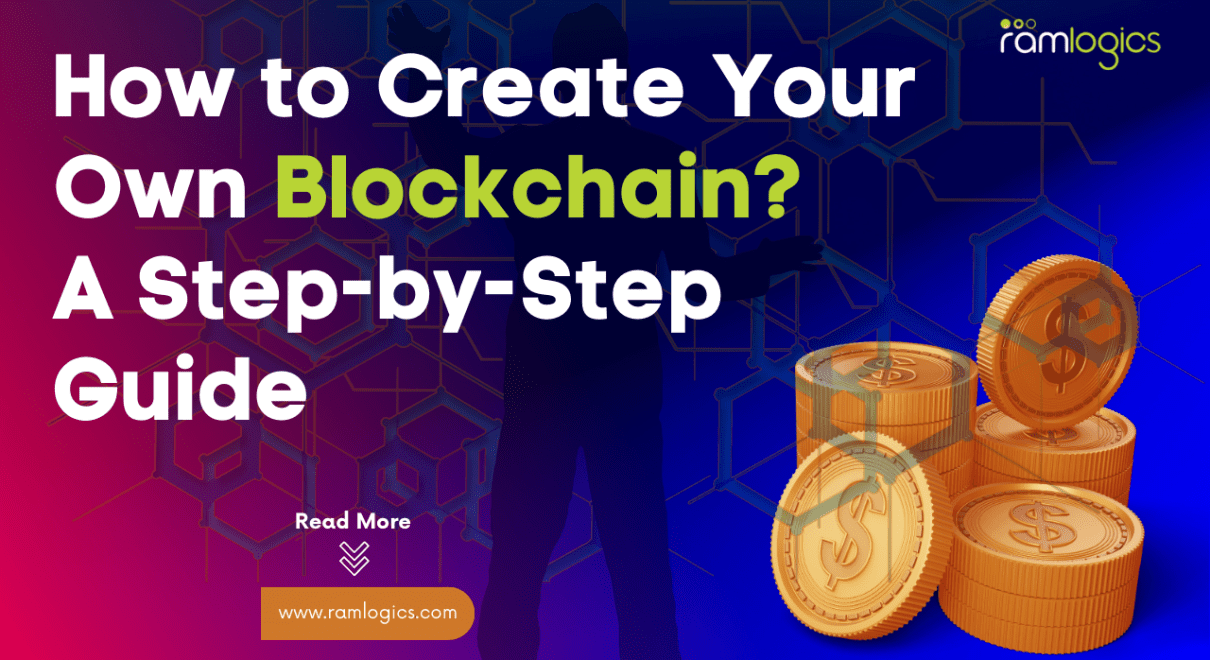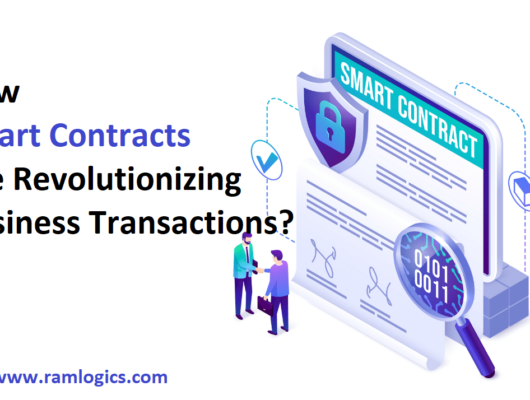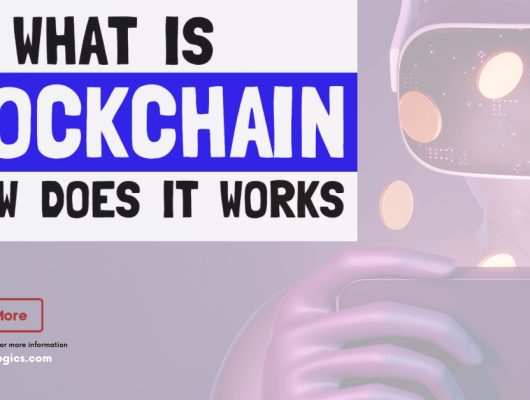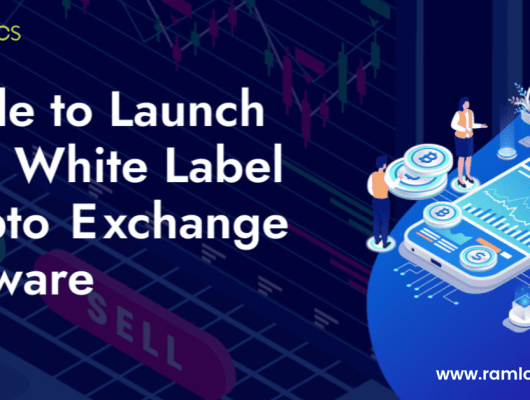How to Create Your Own Blockchain? Blockchain is simply a chain of blocks that record data or transactions. The unique feature of the blockchain application is decentralization – it means the blockchain application is not hosted on a centralized server. Rather, the blockchain application is hosted on the various nodes (virtual systems) of a blockchain network. Each system in a blockchain network has a complete copy of the entire blockchain application. If any of the nodes of the blockchain network gets a discrepancy, it can be identified and rectified immediately. How to Create Your Own Blockchain?
When it comes to creating your own blockchain, you can either hire a good blockchain development company or do the job yourself. However, in order to create your own blockchain network, you first need to learn what is blockchain technology and how it works. How to Create Your Own Blockchain?
There are the following benefits of creating your own blockchain:
- You get the choice of algorithms and consensus mechanisms.
- You get the choice of programming languages (e.g., Python, Java, Solidity, etc.)
- You get the choice of functionalities.
- You get control over the code base.
- You get flexibility in terms of upgrades.
How to Create Your Own Blockchain? – A Step by Step Guide
Since creating your own blockchain is not an easy task, I have compiled a step-by-step guide to help you in the process of creating your own blockchain.
Step 1 – Decide the Use of the Case
The first step towards creating your own blockchain is deciding on a profitable use case for your blockchain application. The blockchain can be profitable for your business in the following three ways:
- Blockchain can authenticate and verify your business information.
- Blockchain can intelligently manage the assets of your business.
- Blockchain can digitally execute your business contracts according to the set terms and conditions.
How does it work? How to Create Your Own Blockchain?
Authentication & Verification of Business Information
How to Create Your Own Blockchain? You can store any type of information or data in the blockchain. Each data record has an immutable digital signature, timestamp, and cryptographic hash. The blockchain also creates a public-private key pair for the authentication and verification of data records.
Intelligent Asset Management
The blockchain can manage your assets intelligently (including their issues, payments, exchange, deposit, and disposal) through smart/crypto asset creation – a tokenized version of your real asset.
Smart Contracts, How to Create Your Own Blockchain?
The blockchain can digitally execute your business contracts according to the set terms and conditions.
Read Also – How To Start A Cryptocurrency Exchange Using White Label Crypto Exchange Software?
Step 2 – Decide the Algorithms & Consensus Mechanisms
While the original blockchain – bitcoin, uses the proof of work as its consensus mechanism, you have to decide the algorithms and consensus mechanisms that will best suit your blockchain. You can choose any of the following algorithms and consensus mechanisms.
- Proof of Work (PoW)
- Proof of Stake (PoS)
- Delegated Proof of Stake (DPoS)
- Proof of Elapsed Time (PoET)
- Proof of Importance (PoI)
- Proof of Capacity (PoC)
- Proof of weight (PoWeight)
- Proof of Activity (PoA)
- Practical Byzantine Fault Tolerance (PBFT)
- Simplified Byzantine Fault Tolerance (SBFT)
- Directed Acyclic Graphs (DAG)
Step 3 – Decide the Distributed Ledger (Blockchain Database)
While there are many open-source distributed ledgers available out there, you need to choose the one that best-suit the preferred algorithms and consensus mechanisms of your blockchain. You can choose any of the following distributed ledgers for your blockchain. How to Create Your Own Blockchain?
- BigChainDB
- Chain Core
- Corda
- Credits
- Domus Tower Blockchain
- Blockchain platform Elements
- Eris:db
- Ethereum
- HydraChain
- Hyperledger Fabric
- Hyperledger Iroha
- Hyperledger Sawtooth Lake
- Multichain
- Openchain
- Quorum
Step 4 – Decide the Blockchain Network
How to Create Your Own Blockchain? After deciding on the distributed ledger systems, you need to choose a blockchain network that will provide you the nodes to store, run and manage your Blockchain Application and its Smart Contract (Backend Code or the Application Logic) and Distributed Database.
You can choose any of the following blockchain networks to store, run and manage your blockchain application.
- Ethereum
- Solana
- Polygon
- Algorand
- Binance Smart Chain
- Arbitrum
- Avalanche
- Celo
- Fantom
- Genosis
- Harmony
- Optimism
- Stacks
Step 5 – Configure the Blockchain Network
Once you have decided on your preferred blockchain network, it is time to configure it for your blockchain project. You must fine-tune the following settings of your blockchain network, accordingly.
- Permissions
- Release of assets
- Re-issuance of assets
- Atomic exchanges
- Key management
- Multi-signature
- Parameters
- Native assets
- Address formats
- Key formats
- Block signatures
Step 6 – Set Up Your Project on the Blockchain Network
Here is a step-by-step guide to help you set up your project on the blockchain network.
Step 1 – Create the APIs
To set up your project on the blockchain network, you need to create the APIs (Application Programming Interfaces) for the following tasks:
- Creation of pairs of keys and addresses
- Performing functions related to audit
- Verification of data using hashes and digital signatures
- Storage and retrieval of data
- Smart asset lifecycle management: issue, payment, exchange, deposit, and disposal
- Smart contracts
Step 2 – Tweak the UI Layout & Admin Settings
After creating the APIs, you need to set up the front-end and back-end programming (the Smart Contracts), distributed ledger systems, and the servers (e.g., Web Server, FTP Server, Mail Server, etc.).
Step 3 – Integrate the Latest Technologies
You may enhance the technical prowess of your blockchain project by integrating the latest technologies like Biometrics, Artificial Intelligence, Machine Learning, Chat-Bots, Business Intelligence Tools, etc.
Step-By-Step Guide To Launch Your Projects
Hire an Expert Blockchain Developer
Step 4 – Choose Your Blockchain App Development Tools
How to Create Your Own Blockchain? As the features and functionalities of your blockchain app play a very crucial role in its success, make sure that your blockchain application development tools best suit your project requirements. You can choose any of the following blockchain app development tools to cater to your bespoke blockchain application requirements.
- Remix IDE
- Truffle Framework
- Solc
- Solium
- Geth
- Embark
- Ganache
- EtherScripter
- Blockchain as a Service (BaaS)
- BlockApps
- Metamask
- Mist
- Blockchain Testnet
- Web3.js
- Javascript testrpc
- Zeppelin
Step 5 – Choose the Best Blockchain Programming Language
After deciding on the blockchain application development platform, choose the best blockchain programming language to develop the front-end (UI) and back-end (Smart Contract) of your blockchain app. How to Create Your Own Blockchain?
You can choose the following programming languages:
- C++
- Java
- Python
- Ruby
- Solidity
- Go
- C#
- JavaScript
- Simplicity
- Rust
- Rholange
- CX
- PHP
- Vyper
- Scylla
Blockchain Related Frequently Asked Questions (FAQs)
What is Blockchain Technology?
The blockchain is actually an advanced database mechanism that stores data in blocks that are linked together chronologically and sequentially in a chain. Blockchain technology allows the open exchange of information within a decentralized network of nodes, each having a copy of the decentralized application, its database, and the back-end code (smart contract). How to Create Your Own Blockchain?
Read Also – What Is Blockchain Technology & How Does It Work?
What is Blockchain Application?
The blockchain application is the application that uses the distributed ledger system (blockchain database) and the smart contracts (the application logic or back-end code) hosted on the various nodes of a decentralized network.
What is Blockchain Node?
The blockchain node is a network stakeholder and the device authorized to validate and store the blockchain application data and serve as a communication hub for network-related tasks.
What is Blockchain Network?
The blockchain network is a decentralized network of nodes that validate and store the data of the decentralized apps and serve as a communication hub for network-related tasks.
What is a Blockchain Application Development Platform?
The blockchain application development platform is software that provides all the necessary libraries and tools to develop a decentralized or blockchain-based application. How to Create Your Own Blockchain?
What is Blockchain Fork?
The blockchain fork refers to the process of forking or cloning the repositories of the existing blockchain application or platform and deploying them on your own server.
What are the Benefits of a Blockchain?
The blockchain comes with a wide range of benefits including digital assets, data security, cost-efficiency, improved productivity, and the benefits of decentralization, to name a few.
What are the Blockchain-Ready Industries?
The blockchain-ready industries are those industries whose business problems and challenges could be solved by blockchain applications. For example, Finance, Ecommerce, Insurance, Medicine, Education, Real Estate, Media & Communication, Supply Chain, Logistics, etc.
What is the Cost of Developing a Blockchain Application?
How to Create Your Own Blockchain? The cost of developing a blockchain application varies from industry to industry and depends on the complexity of your project, desired features and functionalities, the number of blockchain developers required to complete the project, and the cost of a subscription to third-party tools. However, you can get your blockchain application developed by hiring a blockchain developer on an hourly-price basis or hiring a dedicated blockchain development team or company for a fixed price and deadline.
How much Time is Required to Develop a Blockchain Application?
The time required to develop a blockchain project mainly depends on its features and functionalities. Generally, the PoC of a blockchain application takes 3-4 weeks and the MVC with a minimum set of features and functionalities requires 5-6 weeks. Launching the application on the blockchain network usually requires 2-6 months depending on your project’s complexity and business requirements. How to Create Your Own Blockchain?



